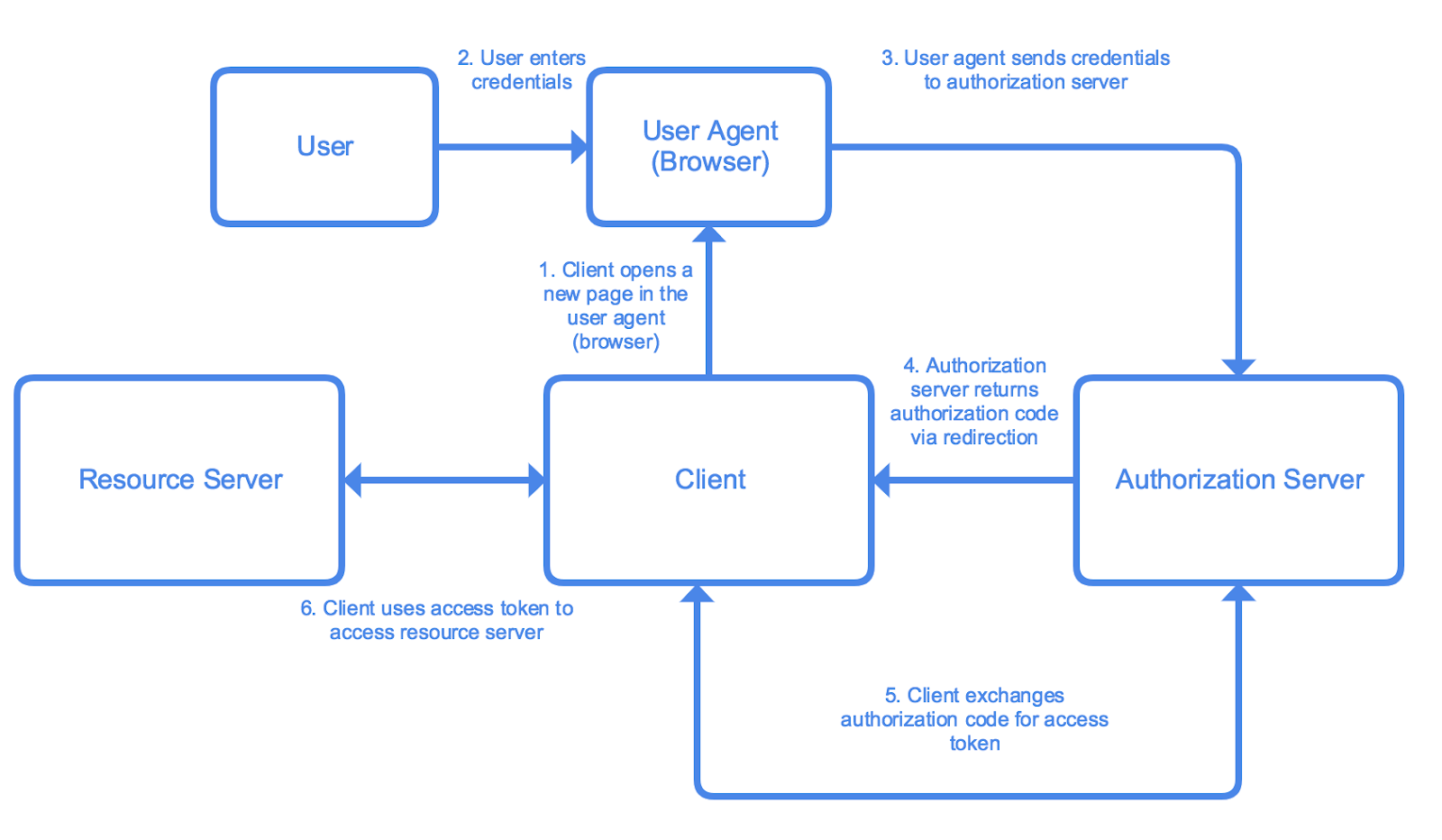Using OAuth2 in Go
Authored by Michael Lamb.
Published on 07 October 2021.
Published on 07 October 2021.
Category: Golang
Reference
Authorization Server Flow

- A Go client will serve a redirect to a browser. This redirect will include a random state variable and a following redirect URL back to the Go client from the authorizing server.
- The user enters credentials into the browser (user agent).
- The user agent send credentials to the authorization server (
u := config.AuthCodeURL(oauthState)prepares the URL, a call tohttp.Redirect()acceptsuand the server redirects the browser). - Authorization server returns an authorization code (
r.FormValue("code")) via the redirection URL provided in step 1. - The Go client will exchange the authorization code for an access token (the client will store the access token in a cookie).
- The Go client uses the access token to access scoped resource servers.
A Simple OAuth Implementation
Download the oauth2 library for import.
go get golang.org/x/oauth2
The app structure I followed is pretty simple:
1. In main.go use net/http to start a server
main.go
package main
import (
"fmt"
"log"
"net/http"
"foundry-automations/handlers"
)
func main() {
server := &http.Server{
Addr: fmt.Sprintf(":8000"),
Handler: handlers.New(),
}
log.Printf("Starting HTTP Server. Listening at %q", server.Addr)
if err := server.ListenAndServe(); err != http.ErrServerClosed {
log.Printf("%v", err)
} else {
log.Println("Server closed!")
}
}
2. Create a module /handlers and add two .go files
base.go<service>.gowhere<service>is a meaningful representation of the authorization server you are relying on (e.g., google apis)
3. Create a Handler
In base.go create func New() http.Handler {} and set up a mux with two handlers, "/auth/<service>/login" and "/auth/<service>/callback", then return mux. The helper functions passed as the second argument of mux.HandleFunc will live in your <service>.go implementation
base.go
package handlers
import (
{
"net/http"
)
func New() http.Handler {
mux := http.NewServeMux()
// Root
mux.Handle("/", http.FileServer(http.Dir("templates/")))
// // OauthGoogle
// mux.HandleFunc("/auth/google/login", oauthGoogleLogin)
// mux.HandleFunc("/auth/google/callback", oauthGoogleCallback)
mux.HandleFunc("/auth/pco/login", pcoLogin)
mux.HandleFunc("/auth/pco/callback", pcoCallback)
return mux
}
}

About michaellamb.dev
Michael Lamb is a software engineer working at C Spire. If you have a blog-specific inquiry please create a new issue on GitHub. Feel free to fork this blog and build your own!Get to know who I am in my first post Hello, World!
© Copyright 2021-2025